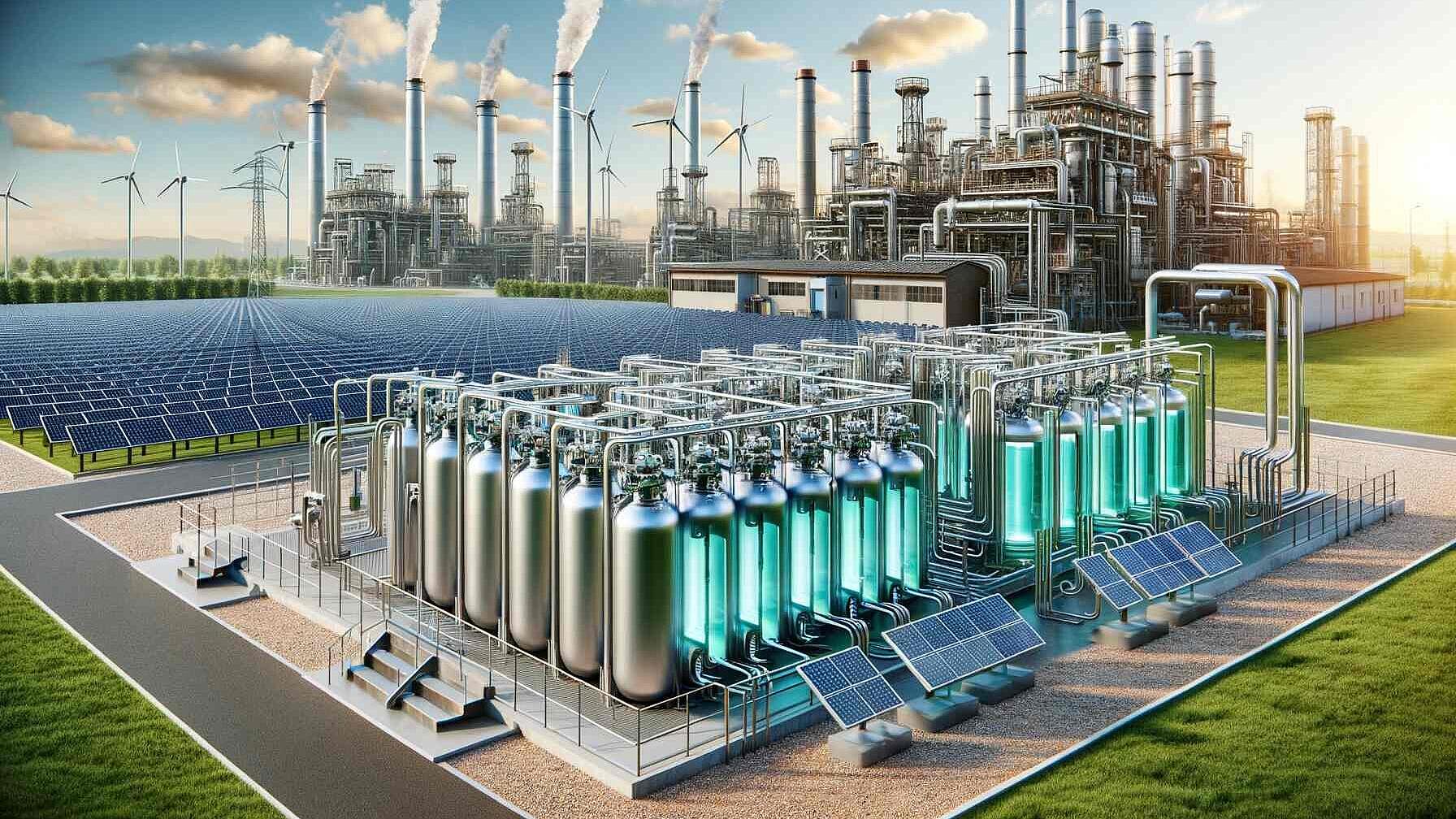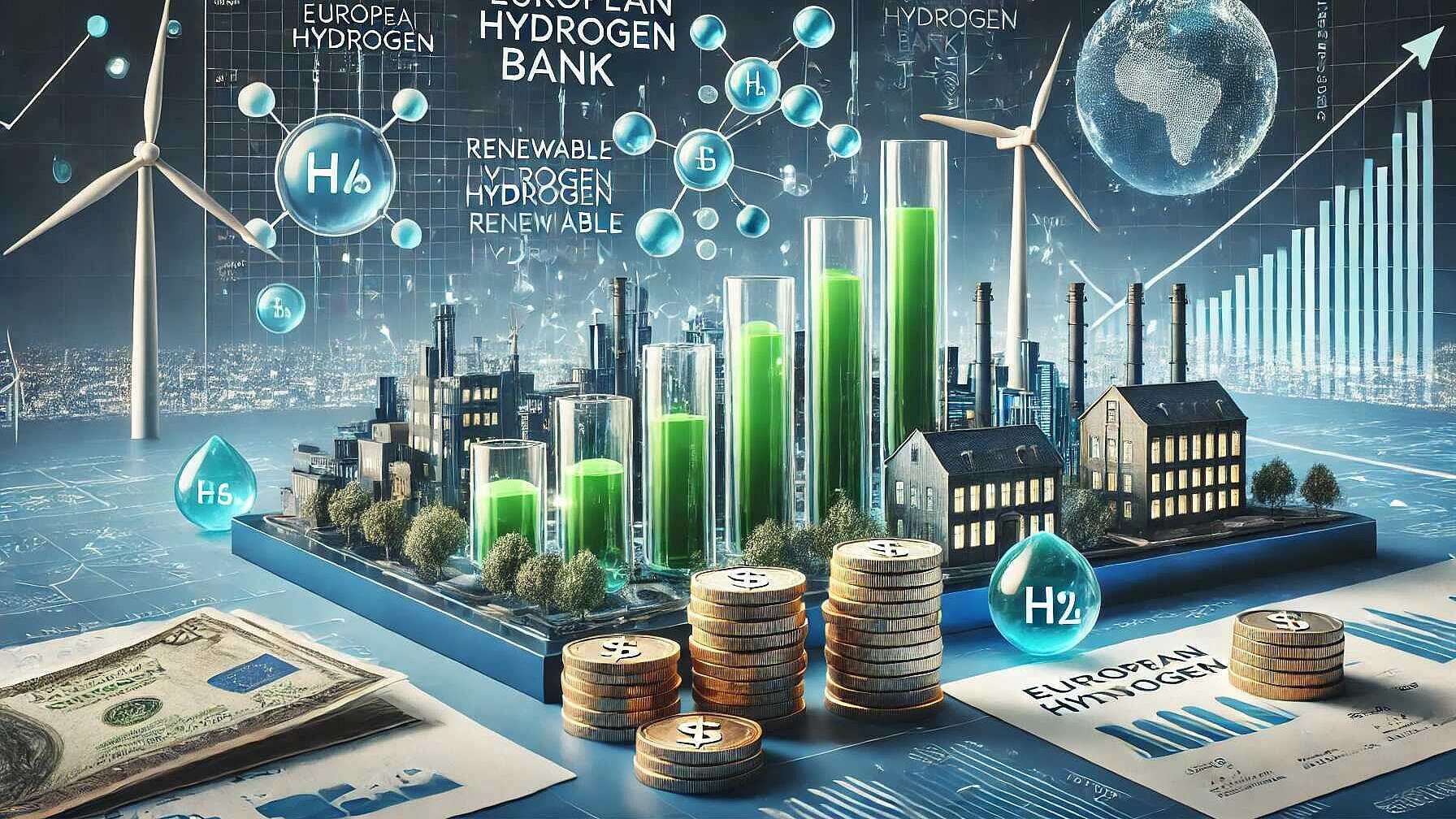 Política & Regulação
Política & RegulaçãoEU Policies for Advancing Green Hydrogen
Resumo
The European Union's strategy for green hydrogen is pivotal in its energy transition and climate neutrality goals. Green hydrogen, central to the European Green Deal, aims to decarbonize sectors like heavy industry and transportation. Key initiatives include the European Hydrogen Strategy, which focuses on installing 40 GW of hydrogen electrolyzers by 2030 and producing 10 million tonnes of renewable hydrogen in the EU. The 'Fit for 55' package revises policies to cut 55% of greenhouse gas emissions by 2030, promoting green hydrogen use. The Clean Hydrogen Alliance, funding from mechanisms like Horizon Europe, and infrastructure development underpin these efforts. The EU is also developing a regulatory framework for green hydrogen certification and forging international partnerships for a diversified hydrogen supply. Addressing challenges like high production costs, the EU's multifaceted policy framework aims to incorporate green hydrogen into its energy system, driving economic growth and innovation in the energy sector.
Artigo aberto completo
EU Policies for Advancing Green Hydrogen
Context and Strategic Importance
Green hydrogen, produced through the electrolysis of water using renewable energy sources, is increasingly recognized as crucial for the EU's energy transition and decarbonization goals. Given its potential to decarbonize hard-to-abate sectors like heavy industry and transportation, green hydrogen forms an integral part of the EU's broader strategy to achieve carbon neutrality by 2050, as outlined in the European Green Deal.
Key Policies and Initiatives
- The European Hydrogen Strategy: Launched in July 2020, this strategy is a cornerstone of the EU's approach to green hydrogen. It aims to create a conducive ecosystem for hydrogen production, including the installation of at least 40 GW of renewable hydrogen electrolyzers by 2030 and the production of up to 10 million tonnes of renewable hydrogen in the EU.
- Fit for 55 Package: This legislative package, part of the European Green Deal, proposes to revise several EU policies to ensure a 55% reduction in greenhouse gas emissions by 2030. The package includes measures to incentivize green hydrogen production and use, particularly in sectors where other decarbonization options might not be viable.
- The Clean Hydrogen Alliance: Established to support the objectives of the Hydrogen Strategy, this alliance brings together industry, governments, and civil society to facilitate the scaling up of hydrogen production and its integration into the energy system.
- Funding and Financial Incentives: Various EU funding mechanisms, such as the Innovation Fund, Horizon Europe, and the European Regional Development Fund, have been earmarked to support hydrogen-related projects. These funds aim to lower the cost of green hydrogen production and stimulate market uptake.
- Research and Innovation: Emphasis is placed on advancing hydrogen technologies through research and innovation. Programs under Horizon Europe, for instance, are geared towards developing more efficient electrolyzers, improving storage technologies, and exploring new applications of hydrogen in different sectors.
- Infrastructure Development: The EU is investing in the necessary infrastructure for hydrogen distribution, including pipelines and storage facilities. The Trans-European Networks for Energy (TEN-E) policy is being revised to better support cross-border hydrogen infrastructure.
- Regulatory Frameworks: The EU is working on developing a robust regulatory framework that includes certification systems for green hydrogen, ensuring that only hydrogen produced using renewable energy sources is classified as 'green'.
- International Partnerships: Recognizing the global dimension of the hydrogen market, the EU is engaging in international partnerships to ensure a secure and diversified supply of hydrogen. Collaborations with countries rich in renewable energy resources are seen as key to the development of a global hydrogen economy.
Challenges and Opportunities
While the potential of green hydrogen is immense, several challenges need addressing. These include high production costs compared to fossil fuel-based hydrogen, technological hurdles in scaling up electrolysis capacity, and the need for substantial renewable energy capacity to produce green hydrogen sustainably.
However, these challenges also present opportunities. For instance, advancements in electrolyzer technology can significantly reduce production costs, and the expansion of renewable energy sources like wind and solar power can provide the necessary energy for green hydrogen production.
Conclusion
The EU's policy framework for green hydrogen is a dynamic and multi-faceted approach designed to integrate this emerging energy carrier into the EU's energy system. By focusing on technology development, infrastructure, regulatory frameworks, and international cooperation, the EU is positioning itself at the forefront of the global shift towards a hydrogen-based economy. This approach not only addresses climate change and energy security concerns but also opens up new economic opportunities, fostering sustainable growth and innovation in the energy sector.
Sources for Further Review
- European Commission: EU Hydrogen Strategy
- European Commission: Fit for 55 Package
- Clean Hydrogen Alliance: Official Website
- Horizon Europe: Research and Innovation
- TEN-E Policy Revision: European Commission
[Note: This analysis is based on my knowledge source as of April 2023, and may not include the most recent developments or policies implemented after this date.]
Own remark
As you could see from the author description, this is a test article with very limited editing. We are obviously analysing where new "tools" like chatGPT can add value and this article is written (or "constructed") by our self-programmed "EEIP Energy Policy Analyst", effectively a GPT. We do not believe that - at least in the very near future - this kind of language models can replace humans when it comes to an interpretation of results. But it can likely be very useful for fact finding. What to a certain extend is what we are currently experimenting with. Please feel free to send me any feedback on usage and/ or how to use this tools.



